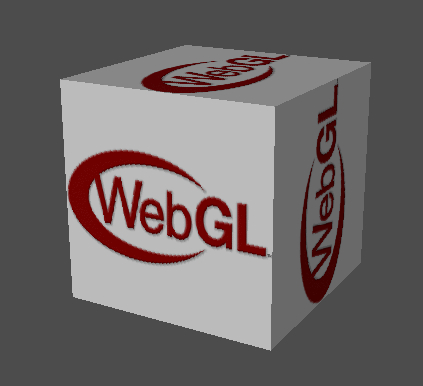- WebGL Beginner's Guide
- WebGL Beginner's Guide
- Credits
- About the Authors
- Acknowledgement
- About the Reviewers
- www.PacktPub.com
- Preface
- 1. Getting Started with WebGL
- System requirements
- What kind of rendering does WebGL offer?
- Structure of a WebGL application
- Creating an HTML5 canvas
- Time for action — creating an HTML5 canvas
- Accessing a WebGL context
- Time for action — accessing the WebGL context
- WebGL is a state machine
- Time for action — setting up WebGL context attributes
- Loading a 3D scene
- Time for action — visualizing a finished scene
- Summary
- 2. Rendering Geometry
- Vertices and Indices
- Overview of WebGL's rendering pipeline
- Rendering geometry in WebGL
- Putting everything together
- Time for action — rendering a square
- Rendering modes
- Time for action — rendering modes
- WebGL as a state machine: buffer manipulation
- Time for action — enquiring on the state of buffers
- Advanced geometry loading techniques: JavaScript Object Notation (JSON) and AJAX
- Time for action — JSON encoding and decoding
- Time for action — loading a cone with AJAX + JSON
- Summary
- 3. Lights!
- Lights, normals, and materials
- Using lights, normals, and materials in the pipeline
- Shading methods and light reflection models
- ESSL — OpenGL ES Shading Language
- Writing ESSL programs
- Time for action — updating uniforms in real time
- Time for action — Goraud shading
- Time for action — Phong shading with Phong lighting
- Back to WebGL
- Bridging the gap between WebGL and ESSL
- Time for action — working on the wall
- More on lights: positional lights
- Time for action — positional lights in action
- Summary
- 4. Camera
- WebGL does not have cameras
- Vertex transformations
- Normal transformations
- WebGL implementation
- The Model-View matrix
- The Camera matrix
- Time for action — exploring translations: world space versus camera space
- Time for action — exploring rotations: world space versus camera space
- Basic camera types
- Time for action — exploring the Nissan GTX
- The Perspective matrix
- Time for action — orthographic and perspective projections
- Structure of the WebGL examples
- Summary
- 5. Action
- 6. Colors, Depth Testing, and Alpha Blending
- Using colors in WebGL
- Use of color in objects
- Time for action — coloring the cube
- Use of color in lights
- Architectural updates
- Time for action — adding a blue light to a scene
- Time for action — adding a white light to a scene
- Time for action — directional point lights
- Use of color in the scene
- Depth testing
- Alpha blending
- Time for action — blending workbench
- Creating transparent objects
- Time for action — culling
- Time for action — creating a transparent wall
- Summary
- 7. Textures
- What is texture mapping?
- Creating and uploading a texture
- Using texture coordinates
- Using textures in a shader
- Time for action — texturing the cube
- Texture filter modes
- Time for action — trying different filter modes
- Texture wrapping
- Time for action — trying different wrap modes
- Using multiple textures
- Time for action — using multitexturing
- Cube maps
- Time for action — trying out cube maps
- Summary
- 8. Picking
- Picking
- Setting up an offscreen framebuffer
- Assigning one color per object in the scene
- Rendering to an offscreen framebuffer
- Clicking on the canvas
- Reading pixels from the offscreen framebuffer
- Looking for hits
- Processing hits
- Architectural updates
- Time for action — picking
- Implementing unique object labels
- Time for action — unique object labels
- Summary
- 09. Putting It All Together
- 10. Advanced Techniques
- Post-processing
- Architectural updates
- Time for action — testing some post-process effects
- Point sprites
- Time for action — using point sprites to create a fountain of sparks
- Normal mapping
- Time for action — normal mapping in action
- Ray tracing in fragment shaders
- Time for action — examining the ray traced scene
- Summary
So far, we've added details to our scene with geometry, vertex colors, and lighting; but often that won't be enough to achieve the look that we want. Wouldn't it be great if we could "paint" additional details onto our scene without needing additional geometry? We can, through a technique called texture mapping. In this chapter, we'll examine how we can use textures to make our scene more detailed.
In this chapter, we'll learn the following:
- How to create a texture
- How to use a texture when rendering
- Filter and wrapping modes and how they affect the texture's use
- Multi-texturing
- Cube mapping
Let's get started!
Texture mapping is, at its most basic, a method for adding detail to the geometry being rendered by displaying an image on the surface. Consider the following image:

Using only the techniques that we've learned so far, this relatively simple scene would be very difficult to build and unnecessarily complex. The WebGL logo would have to be carefully constructed out of many little triangles with appropriate colors. Certainly such an approach is possible, but the additional geometry needed would make it quickly impractical for use in even a marginally complex scene.
Luckily for us, texture mapping makes the above scene incredibly simple. All that's required is an image of the WebGL logo in an appropriate file format, an additional vertex attribute on the mesh, and a few additions to our shader code.
-
No Comment
